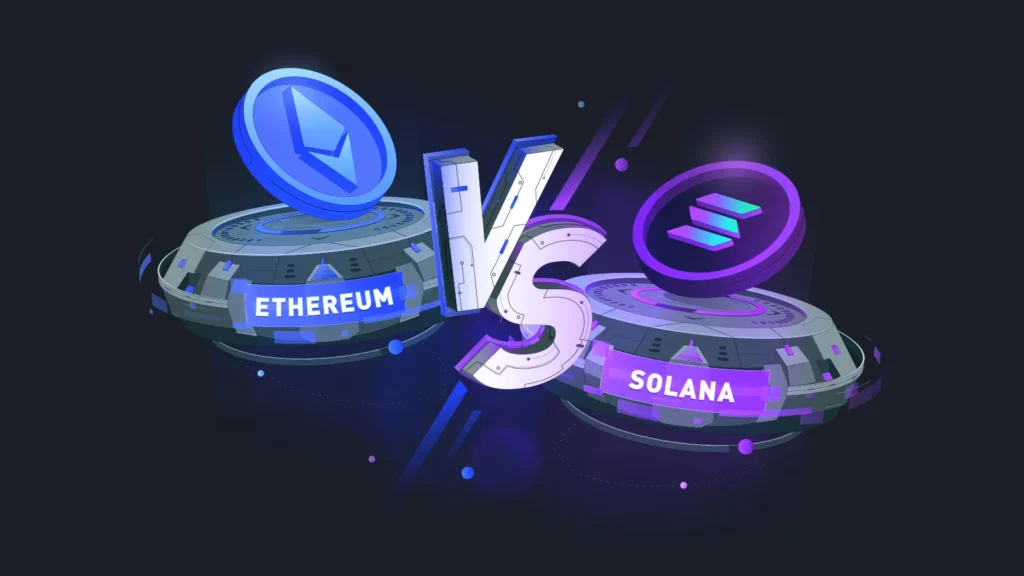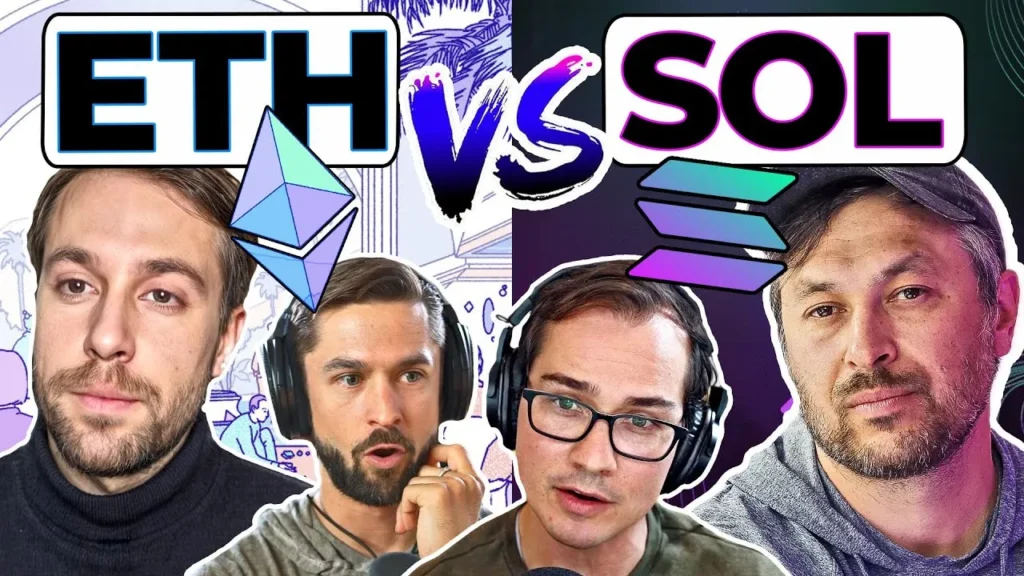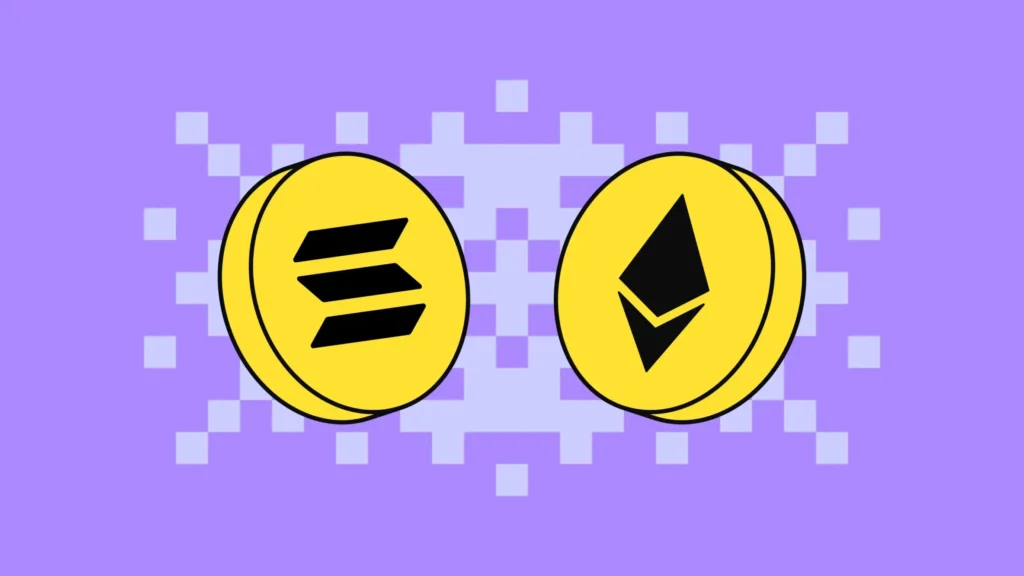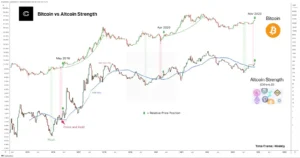Solana vs Ethereum 2024: Which Platform Is Leading the Way?
As blockchain technology evolves, Solana vs Ethereum 2024 has become a hot topic for developers, investors, and tech enthusiasts. With Ethereum’s established reputation and Solana’s impressive speed and cost-efficiency, both platforms present strong arguments as the top blockchain of 2024. This article delves deep into Solana vs Ethereum 2024, exploring their unique strengths, weaknesses, and which might be the best choice for the future of decentralized technology.
1. Introduction to Solana vs Ethereum 2024
In the evolving blockchain landscape, Solana vs Ethereum 2024 represents a clash of two giants with contrasting approaches. Ethereum, launched in 2015, introduced smart contracts and led the way in decentralized applications (dApps). Solana, a relatively newer blockchain, emerged with a focus on scalability and high-speed transactions. As we assess Solana vs Ethereum 2024, understanding their technical differences, strengths, and potential areas of dominance in 2024 is essential.
2. The Vision and Key Features of Solana
Solana’s mission is to provide a scalable, high-speed platform for decentralized applications without sacrificing decentralization or security. Key features that distinguish Solana vs Ethereum 2024 include:
- Proof of History (PoH): Solana’s innovative PoH mechanism allows for incredibly fast transaction processing by creating a historical record that proves transactions occurred in a specific sequence.
- Low Transaction Costs: With transaction fees often under $0.01, Solana is much more cost-effective than Ethereum.
- High Throughput: Solana can handle up to 65,000 transactions per second (TPS), a significant advantage over Ethereum’s current capabilities.
By addressing scalability issues, Solana aims to empower Web3 applications with low fees and high-speed processing, making it a strong contender in the Solana vs Ethereum 2024 debate.
3. The Vision and Key Features of Ethereum
Ethereum is known as the pioneering platform for smart contracts and dApps. Ethereum 2.0 brought significant upgrades to Ethereum’s scalability and environmental impact. Key aspects of Solana vs Ethereum 2024 for Ethereum include:
- Proof of Stake (PoS): Ethereum’s shift from Proof of Work (PoW) to PoS has reduced energy consumption by over 99%, making it a more eco-friendly choice.
- Robust Developer Ecosystem: With a long history and large developer base, Ethereum offers extensive resources and support for developers.
- Layer 2 Solutions: Ethereum’s Layer 2 solutions, such as Arbitrum and Optimism, improve transaction speed and lower fees, addressing scalability challenges.
Ethereum’s community and reputation make it a formidable opponent in the Solana vs Ethereum 2024 competition, especially for decentralized finance (DeFi) and non-fungible token (NFT) projects.
4. Scalability Comparison
One of the most critical factors in Solana vs Ethereum 2024 is scalability. Solana has an advantage with its ability to process 65,000 TPS, compared to Ethereum’s current 30 TPS. However, Ethereum’s Layer 2 solutions aim to boost its scalability and make it more competitive.
- Solana: Capable of handling a high volume of transactions at a low cost, making it ideal for applications that require speed.
- Ethereum: Layer 2 solutions and ongoing upgrades have made Ethereum more scalable, but it still faces challenges in competing with Solana’s natural capacity for high throughput.
While Solana is favored for scalability, Ethereum’s gradual improvements keep it in the running for developers who prefer its established ecosystem.
5. Speed and Transaction Costs
Transaction speed and cost are significant factors in Solana vs Ethereum 2024:
- Solana: Known for its lightning-fast transaction speeds and low fees, Solana provides a smooth experience for developers and users.
- Ethereum: Despite its Layer 2 solutions, Ethereum’s transactions are still relatively slower and costlier, especially during high demand.
These differences make Solana appealing for projects that require low transaction costs, such as microtransactions and NFT marketplaces.
6. Decentralization and Security
Decentralization and security are essential in the blockchain space, making them key considerations in the Solana vs Ethereum 2024 discussion:
- Ethereum: With a vast network of nodes and its move to PoS, Ethereum maintains a high level of decentralization and security.
- Solana: While Solana is faster, it operates with fewer nodes, raising concerns about centralization and potential security vulnerabilities.
Ethereum’s stronger decentralization appeals to developers looking for secure platforms, while Solana’s focus on speed offers a competitive edge in high-frequency applications.
7. Developer and Community Support
When it comes to Solana vs Ethereum 2024, developer support is crucial:
- Ethereum: With years of development and an extensive community, Ethereum provides robust support, tools, and frameworks.
- Solana: Although newer, Solana’s ecosystem is growing rapidly, attracting a diverse range of developers, especially those focused on scalable applications.
Ethereum’s established tools make it the go-to for many developers, while Solana’s high-speed capabilities are drawing in new talent and attention.
8. Ecosystem and Use Cases
The Solana vs Ethereum 2024 ecosystem is growing rapidly, and each platform is carving out unique use cases:
- Ethereum: Known for DeFi and NFTs, Ethereum has a stronghold in these areas due to its mature ecosystem.
- Solana: Solana is gaining traction for decentralized applications that require high speeds, like gaming and real-time applications.
While Ethereum remains the top choice for DeFi and NFT projects, Solana’s speed makes it ideal for gaming and real-time data applications.
9. Future Outlook: Solana vs Ethereum 2024
As we look into the future, Solana vs Ethereum 2024 poses an interesting question about where each platform is headed. Ethereum continues to build on its Layer 2 solutions and improve scalability, while Solana seeks to expand its ecosystem and attract high-throughput applications. Both are working on enhancing their platforms, making it likely that both will coexist with distinct strengths in the blockchain ecosystem.
10. Conclusion: Which Is Leading in 2024?
Solana vs Ethereum 2024 represents a clash between speed and security, with both platforms offering unique advantages. Solana’s scalability and transaction cost efficiency make it attractive for developers who prioritize speed, while Ethereum’s decentralization, security, and established ecosystem make it an industry leader. Ultimately, the choice between Solana and Ethereum in 2024 depends on the specific needs of the project and the long-term goals of developers and investors.




